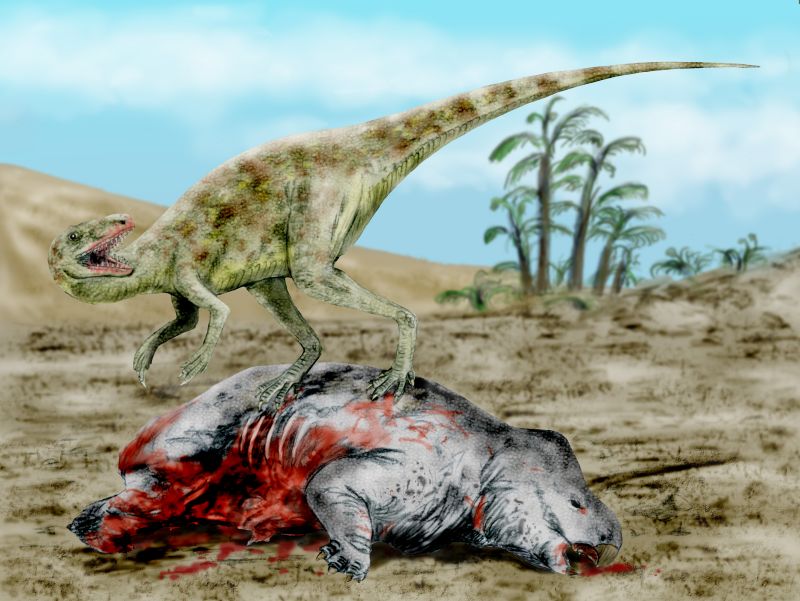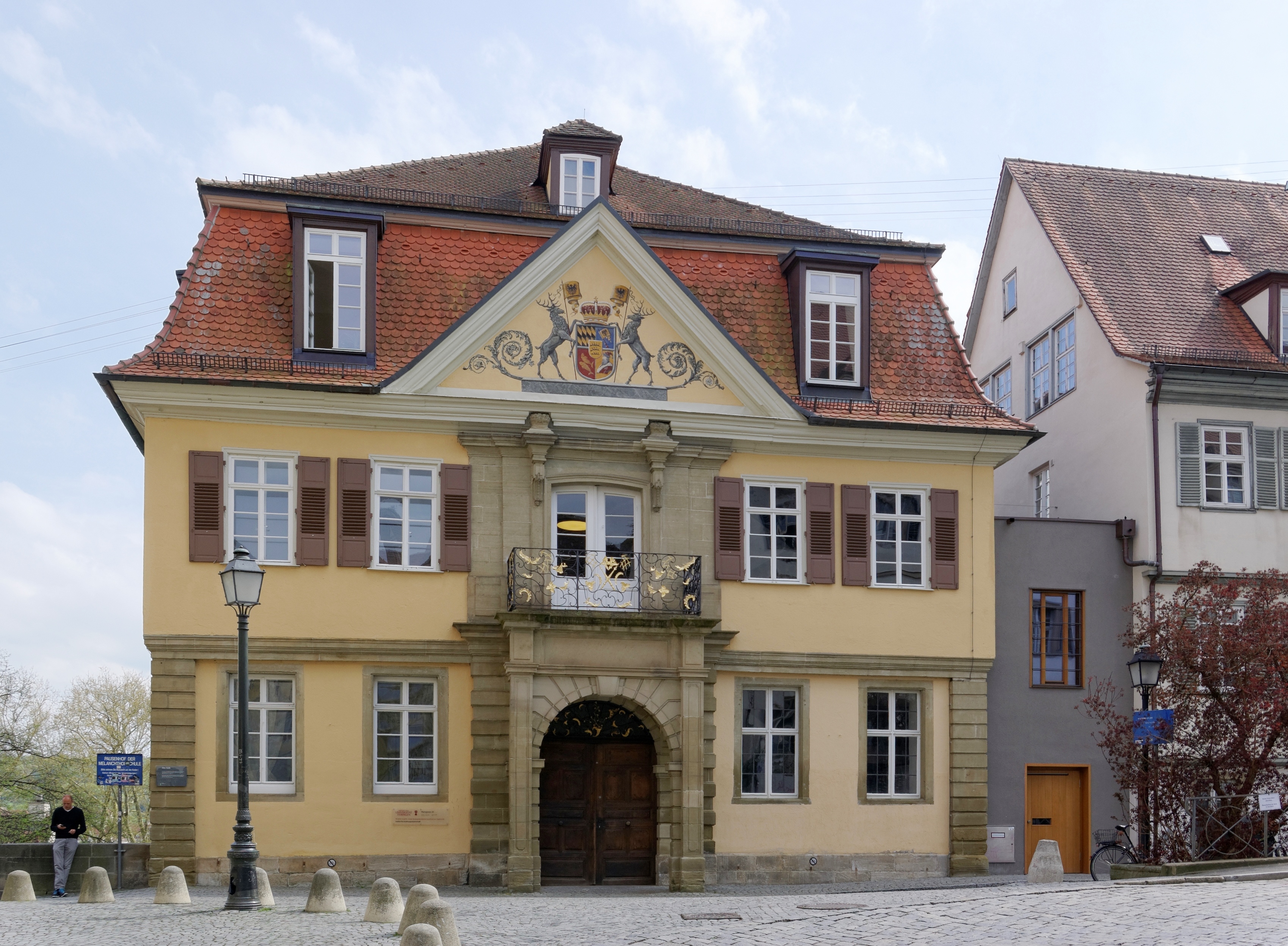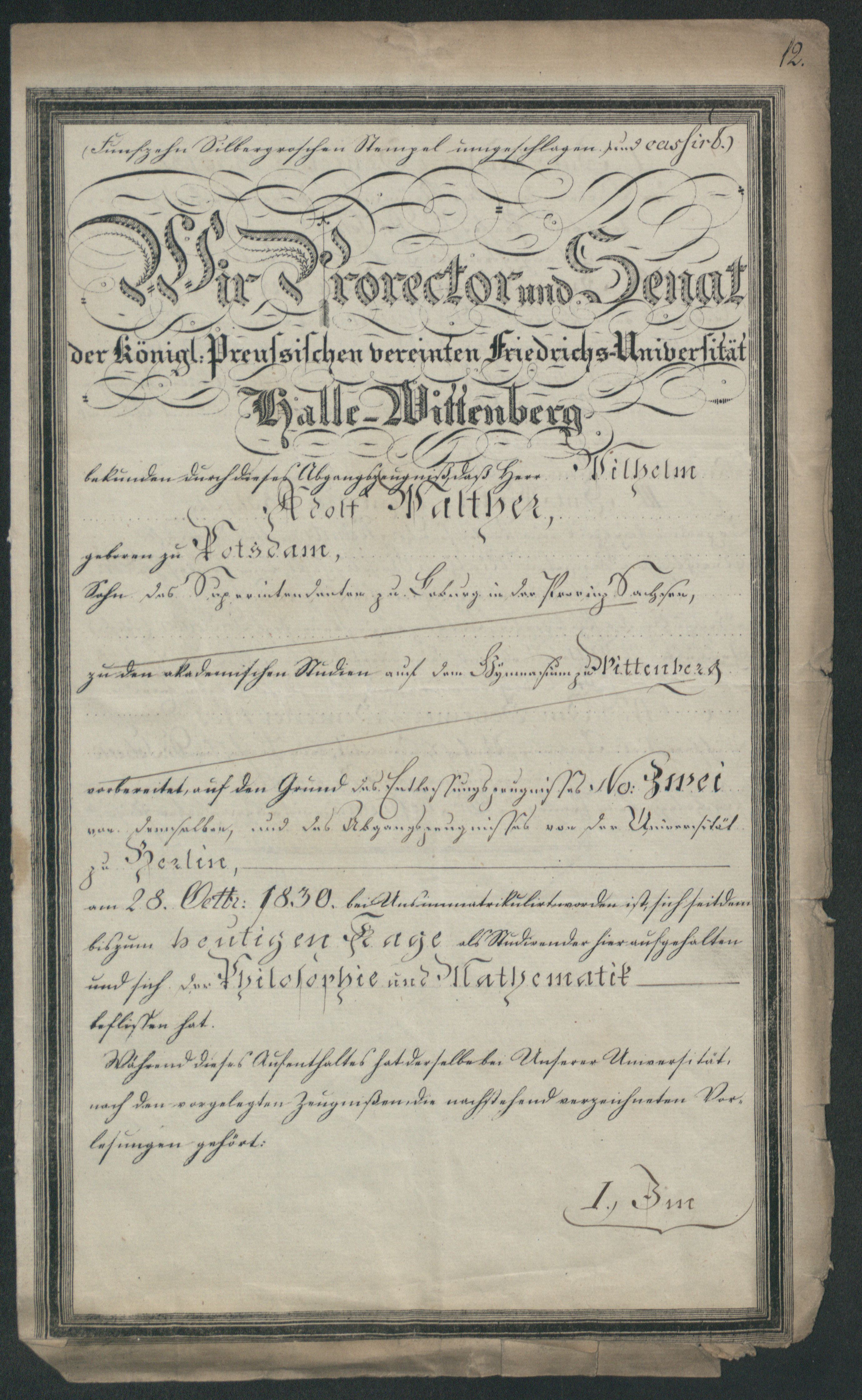|
Sanga Da Alemoa
The ''Sanga da Alemoa'' paleontological site is located in the city of Santa Maria, Rio Grande do Sul, in Brazil. It belongs to the Caturrita Formation and the Santa Maria Formation. It is located in the neighborhood of ''Castelinho''. The site belongs to the paleorrota region. History Historically the Sanga da Alemoa is one of the most important paleontological sites in Brazil. It was this site that came out ''Staurikosaurus'', the first Brazilian dinosaur and one of the oldest found in the world. Researchers collected fossil in this site that drew attention of international researchers who later visited the region. These local researchers shaped the paleontological research in the region and Brazil. For all these contributions and historical factors, the Sanga da Alemoa is now known internationally. The site was discovered by Professor and geographer Antero de Almeida, in 1901, when the first fossil was found at the site and also the first fossil of paleorrota. In 1902, D ... [...More Info...] [...Related Items...] OR: [Wikipedia] [Google] [Baidu] |
Staurikosaurus
''Staurikosaurus'' (Pronounced "STORE-ee-koh-SAWR-us", "Southern Cross lizard") is a genus of herrerasaurid dinosaur from the Late Triassic of Brazil, found in the Santa Maria Formation. Description Colbert (1970) described ''Staurikosaurus'' as a small and agile, bipedal predator.Colbert, E. H. (1970). A Saurischian dinosaur from the Triassic of Brazil. AM. MUS. NOVITATES 2405; 1-39 ''Staurikosaurus'' lived during the late-Carnian and early-Norian stage, of the Late Triassic, approximately 225 million years ago—which makes it one of the earliest dinosaurs known. Its length is measured at long,Grillo, O.N. and Azevedo, S.A.K. (2011). "Recovering missing data: estimating position and size of caudal vertebrae in ''Staurikosaurus pricei'' Colbert, 1970." ''Annals of the Brazilian Academy of Sciences'', but Gregory S. Paul presented a lower length estimate of and a body mass estimate of . ''Staurikosaurus'' was small in comparison to later theropods like ''Megalosaurus''. The ... [...More Info...] [...Related Items...] OR: [Wikipedia] [Google] [Baidu] |
Rio De Janeiro
Rio de Janeiro ( , , ; literally 'River of January'), or simply Rio, is the capital of the state of the same name, Brazil's third-most populous state, and the second-most populous city in Brazil, after São Paulo. Listed by the GaWC as a beta global city, Rio de Janeiro is the sixth-most populous city in the Americas. Part of the city has been designated as a World Heritage Site, named "Rio de Janeiro: Carioca Landscapes between the Mountain and the Sea", on 1 July 2012 as a Cultural Landscape. Founded in 1565 by the Portuguese, the city was initially the seat of the Captaincy of Rio de Janeiro, a domain of the Portuguese Empire. In 1763, it became the capital of the State of Brazil, a state of the Portuguese Empire. In 1808, when the Portuguese Royal Court moved to Brazil, Rio de Janeiro became the seat of the court of Queen Maria I of Portugal. She subsequently, under the leadership of her son the prince regent João VI of Portugal, raised Brazil to the dignity of a k ... [...More Info...] [...Related Items...] OR: [Wikipedia] [Google] [Baidu] |
Carlos De Paula Couto
Carlos de Paula Couto, (Porto Alegre, August 30, 1910 – November 15, 1982) was a Brazilian paleontologist. Biography Paula Couto was a researcher at the National Museum of Brazil in Rio de Janeiro, specialized in paleontology of mammals. Over 40 years, published dozens of scientific articles in top international publications. He was also responsible for rescuing the work of the Danish palaeontologist Peter Wilhelm Lund Peter Wilhelm Lund (14 June 1801 – 25 May 1880) was a Danish paleontologist, zoologist, and archeologist. He spent most of his life working and living in Brazil. He is considered the father of Brazilian paleontology as well as archaeology. He ... (1801–1880), who translated under the title Memórias sobre a Paleontologia Brasileira (''Memoirs of the Brazilian Paleontology'') (1850). Among his works stand out, ''Brazilian Paleontology'' ( Mammals) (1953) and ''Treaty of Paleomastozoologia'' (1979). Awards Awarded Fellowships from the John Simon Gu ... [...More Info...] [...Related Items...] OR: [Wikipedia] [Google] [Baidu] |
Edwin Harris Colbert
Edwin Harris "Ned" Colbert (September 28, 1905 – November 15, 2001)O'Connor, Anahad ''The New York Times'', November 25, 2001. was a distinguished American vertebrate paleontologist and prolific researcher and author. Born in Clarinda, Iowa, he grew up in Maryville, Missouri and graduated from Maryville High School. His father was George H. Colbert who was head of the mathematics department at Northwest Missouri State University and had been at the college since its founding in 1906. He received his A.B. from the University of Nebraska, then his Masters and Ph.D. from Columbia University, finishing in 1935. He married Margaret Matthew, daughter of the eminent paleontologist William Diller Matthew, in 1933. She became a noted artist, illustrator, and sculptor who specialized in visualizing extinct species. The couple had five sons together. The young family moved to Leonia, New Jersey, in 1937 and lived there for decades. Among the positions Colbert held was Curator of Ve ... [...More Info...] [...Related Items...] OR: [Wikipedia] [Google] [Baidu] |
Cerritosaurus
''Cerritosaurus'' is a genus of proterochampsid archosauromorph from the Late Triassic. It has been found in the Santa Maria Formation, in the Geopark of Paleorrota, Brazil Brazil ( pt, Brasil; ), officially the Federative Republic of Brazil (Portuguese: ), is the largest country in both South America and Latin America. At and with over 217 million people, Brazil is the world's fifth-largest country by area .... It is represented by one species.''Cerritosaurus'' at Fossilworks.org It was collected in 1941 by Antonio Binsfeld, in Sanga da Alemoa. Nearby, there is a small mountain called the Cerrito, after whic ... [...More Info...] [...Related Items...] OR: [Wikipedia] [Google] [Baidu] |
University Of Tübingen
The University of Tübingen, officially the Eberhard Karl University of Tübingen (german: Eberhard Karls Universität Tübingen; la, Universitas Eberhardina Carolina), is a public research university located in the city of Tübingen, Baden-Württemberg, Germany. The University of Tübingen is one of eleven German Excellence Universities. The University of Tübingen is especially known as a centre for the study of plant biology, medicine, law, archeology, ancient cultures, philosophy, theology, and religious studies as well as more recently as center of excellence for artificial intelligence. The university's noted alumni include presidents, EU Commissioners, and judges of the Federal Constitutional Court. The university is associated with eleven Nobel laureates, especially in the fields of medicine and chemistry. History The University of Tübingen was founded in 1477 by Count Eberhard V (Eberhard im Bart, 1445–1496), later the first Duke of Württemberg, a civic and ... [...More Info...] [...Related Items...] OR: [Wikipedia] [Google] [Baidu] |
Germany
Germany,, officially the Federal Republic of Germany, is a country in Central Europe. It is the second most populous country in Europe after Russia, and the most populous member state of the European Union. Germany is situated between the Baltic and North seas to the north, and the Alps to the south; it covers an area of , with a population of almost 84 million within its 16 constituent states. Germany borders Denmark to the north, Poland and the Czech Republic to the east, Austria and Switzerland to the south, and France, Luxembourg, Belgium, and the Netherlands to the west. The nation's capital and most populous city is Berlin and its financial centre is Frankfurt; the largest urban area is the Ruhr. Various Germanic tribes have inhabited the northern parts of modern Germany since classical antiquity. A region named Germania was documented before AD 100. In 962, the Kingdom of Germany formed the bulk of the Holy Roman Empire. During the 16th ce ... [...More Info...] [...Related Items...] OR: [Wikipedia] [Google] [Baidu] |
Rudolf Stahlecker
Rudolf Stahlecker (25 November 1898 in Sternenfels near Pforzheim – 26 October 1977 in Urach) was a German geologist and biology teacher. Biography He studied with the German paleontologist Friedrich von Huene at the University of Tübingen, Germany. He participated in expeditions to collect fossils in the geopark of Paleorrota in 1928 and 1929. He also made several collections of fossils in Argentina. In his honor, the dicynodonts '' Stahleckeria potens'' received its name. This dicynodonts was collected in Paleontological Site Chiniquá, São Pedro do Sul. After finishing his doctorate, Stahlecker did not become a scientist but a biology teacher at a school in Stuttgart. His motto was, "the ''Führer'' wanted to teach people to think again biologically; we scientists have to be here as its first collaborators". After World War 2, he had to pause for some years during de-Nazification, thought he was not as intensely involved in the Nazi Party as his brother, Walte ... [...More Info...] [...Related Items...] OR: [Wikipedia] [Google] [Baidu] |
Geologist
A geologist is a scientist who studies the solid, liquid, and gaseous matter that constitutes Earth and other terrestrial planets, as well as the processes that shape them. Geologists usually study geology, earth science, or geophysics, although backgrounds in physics, chemistry, biology, and other sciences are also useful. Field research (field work) is an important component of geology, although many subdisciplines incorporate laboratory and digitalized work. Geologists can be classified in a larger group of scientists, called geoscientists. Geologists work in the energy and mining sectors searching for natural resources such as petroleum, natural gas, precious and base metals. They are also in the forefront of preventing and mitigating damage from natural hazards and disasters such as earthquakes, volcanoes, tsunamis and landslides. Their studies are used to warn the general public of the occurrence of these events. Geologists are also important contributors to climate ch ... [...More Info...] [...Related Items...] OR: [Wikipedia] [Google] [Baidu] |
Gomphodontosuchus
''Gomphodontosuchus'' is an extinct genus of cynodonts. It was created to describe the species ''Gomphodontosuchus brasiliensis''. Species ''Gomphodontosuchus brasiliensis'' was first collected in 1928 by Friedrich von Huene in Santa Maria Formation, the Geopark of Paleorrota, Brazil Brazil ( pt, Brasil; ), officially the Federative Republic of Brazil (Portuguese: ), is the largest country in both South America and Latin America. At and with over 217 million people, Brazil is the world's fifth-largest country by area .... References Paleobiology Database 39207Paleobiology Database 100826UNVERSIDADE FEDERAL DO RIO GRANDE DO SUL Traversodontids Prehistoric cynodont genera Late Triassic synapsids of South America Fossil taxa described in 1928 Taxa named by Friedrich von Huene {{Paleo-therapsid-stub ... [...More Info...] [...Related Items...] OR: [Wikipedia] [Google] [Baidu] |
Cynodont
The cynodonts () (clade Cynodontia) are a clade of eutheriodont therapsids that first appeared in the Late Permian (approximately 260 mya), and extensively diversified after the Permian–Triassic extinction event. Cynodonts had a wide variety of lifestyles, including carnivory and herbivory. Mammals are cynodonts, as are their extinct ancestors and close relatives, having evolved from advanced probainognathian cynodonts during the Late Triassic. All other cynodont lines went extinct, with the last known non-mammalian cynodont group, the Tritylodontidae, having its youngest records in the Early Cretaceous. Description Early cynodonts have many of the skeletal characteristics of mammals. The teeth were fully differentiated and the braincase bulged at the back of the head. Outside of some crown-group mammals (notably the therians), all cynodonts probably laid eggs. The temporal fenestrae were much larger than those of their ancestors, and the widening of the zygomatic arch in ... [...More Info...] [...Related Items...] OR: [Wikipedia] [Google] [Baidu] |
University Of Halle-Wittenberg
Martin Luther University of Halle-Wittenberg (german: Martin-Luther-Universität Halle-Wittenberg), also referred to as MLU, is a public, research-oriented university in the cities of Halle and Wittenberg and the largest and oldest university in the German state of Saxony-Anhalt. MLU offers German and international (English) courses leading to academic degrees such as BA, BSc, MA, MSc, doctoral degrees, and Habilitation. The university was created in 1817 through the merger of the University of Wittenberg (founded in 1502) and the University of Halle (founded in 1694). MLU is named after Protestant reformer Martin Luther, who was a professor in Wittenberg. Today, the university campus is located in Halle, while ''Leucorea Foundation'' in Wittenberg serves as MLU's convention centre. Both Halle and Wittenberg are about one hour from Berlin via the Berlin–Halle railway, which offers Intercity-Express (ICE) trains. History University of Wittenberg (''Universität Wittenbe ... [...More Info...] [...Related Items...] OR: [Wikipedia] [Google] [Baidu] |





